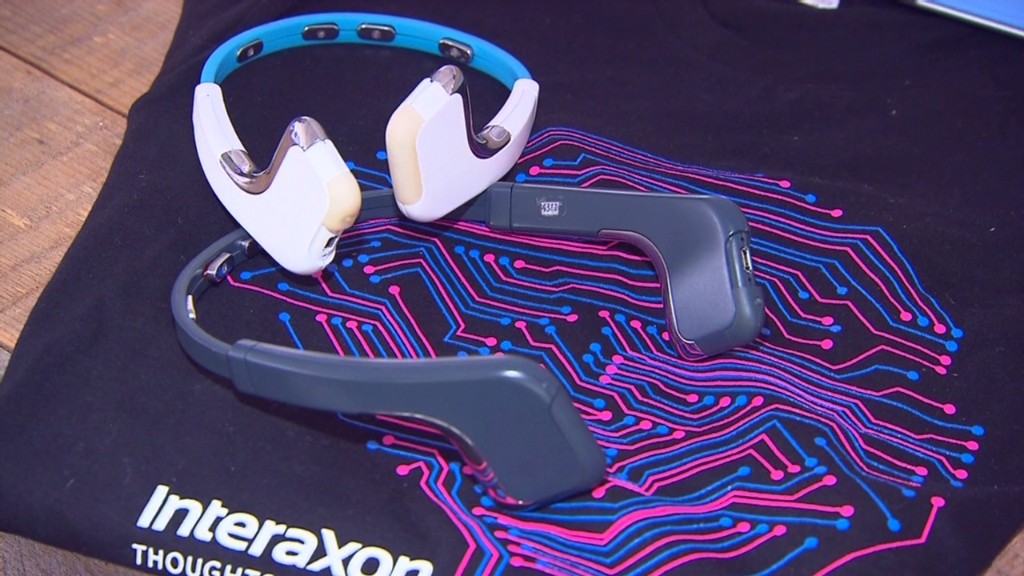
Gadgets aren't just for your desk or pocket anymore. A whole new category of devices is being built for your body.
Wearable gadgets -- from Google Glass to the Apple (AAPL) Watch -- are here to stay. But it's not yet clear what purpose many of these wearable gizmos will serve. They're marketed as everything from second screens for your smartphone to fitness trackers to personal assistants.
Meanwhile, there's a less talked-about group of wearable gadgets that has a clear, futuristic purpose: To turn people into superhumans by amplifying their senses and abilities.
Many of these gizmos are prototypes, but they paint a portrait of a future in which gadgets hack people -- not the other way around.
Related: Apple unveils the Apple Watch
Sight: A group of British designers developed a mask called Eidos that allows people to see movement better. The device overlays what you're seeing now with images that it recorded just a few milliseconds ago. The effect is a kind of time-lapse video, only in real time.
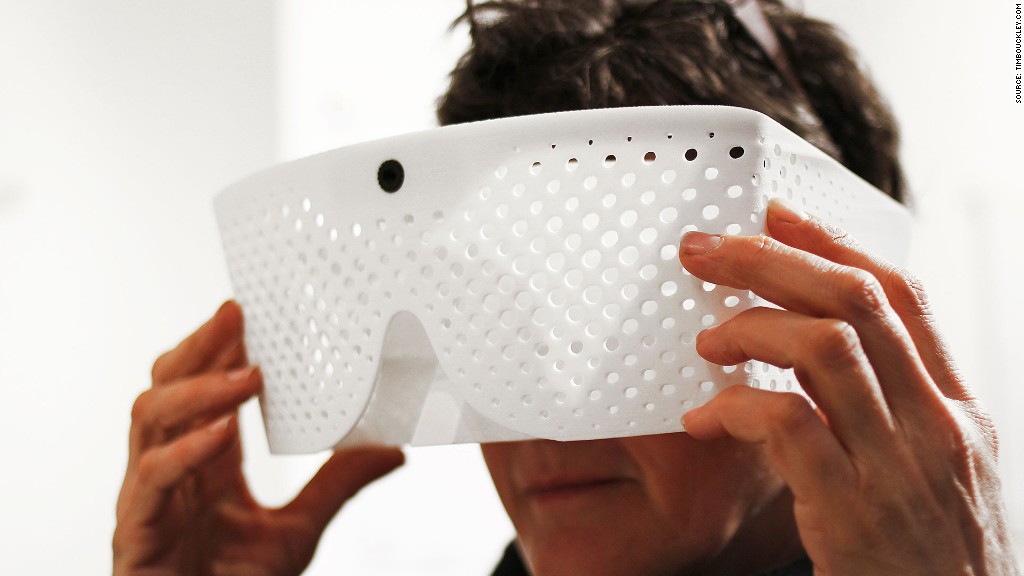
Eidos allows you to see moving objects more clearly and determine patterns in them. For instance, a rower or golfer could trace her ideal stroke, or security professionals could better track suspicious activity.
Hearing: SoundHawk is a kind of a hearing aid on steroids. The wearable device doesn't just amplify all sounds like a traditional hearing aid -- it cuts through background noise, focusing on the speech of the person you want to hear. An app lets you tune the device to listen for specific sounds you'd like to make louder (say, your wife), and reduces other sounds.
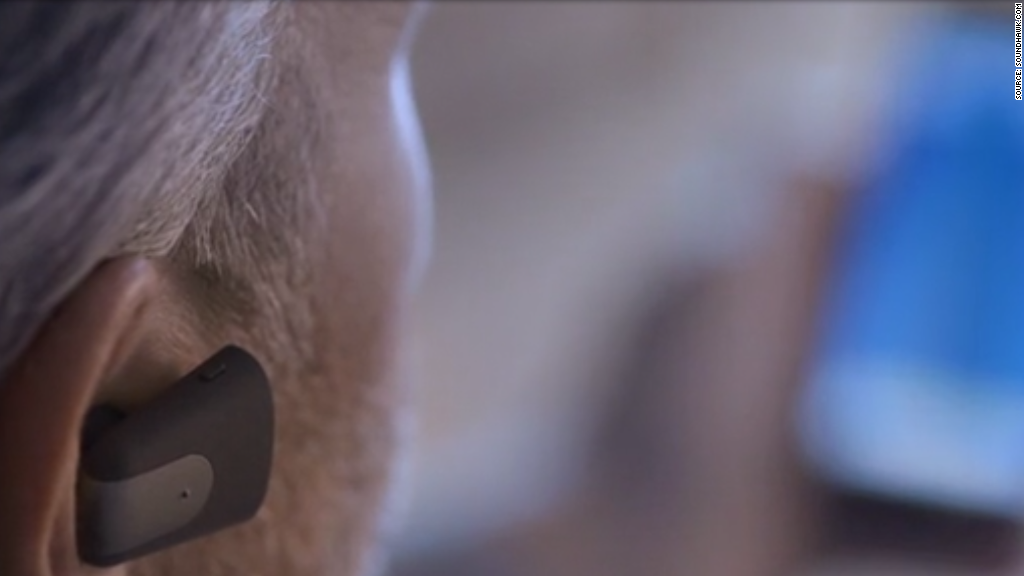
And Eidos makes another mask that works like SoundHawk. It doesn't look nearly as inconspicuous, but it has the same basic function.
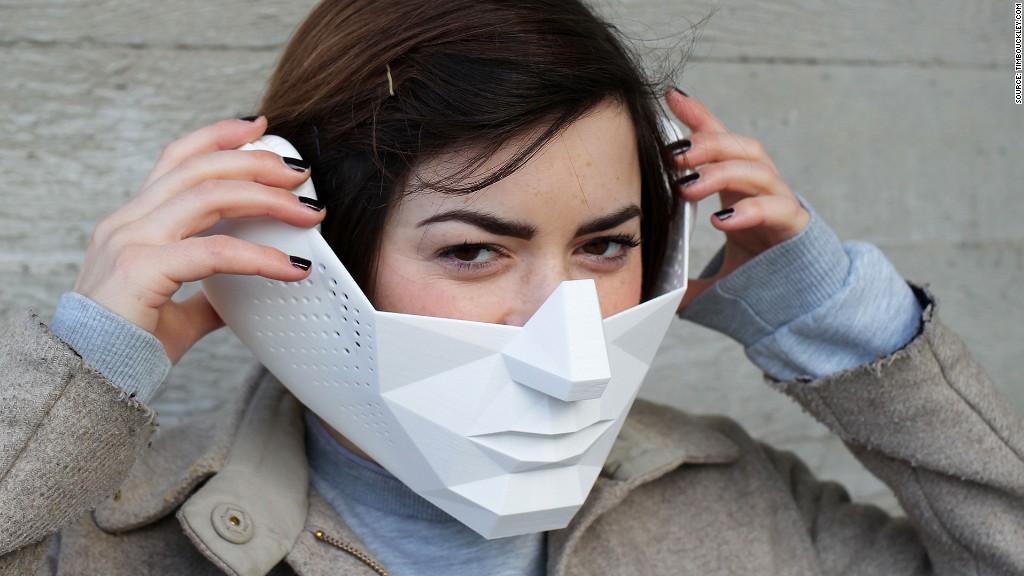
Strength: The Ekso body suit is a kind of robotic exoskeleton that gives people super strength. It's kind of like a real-life Iron Man suit.
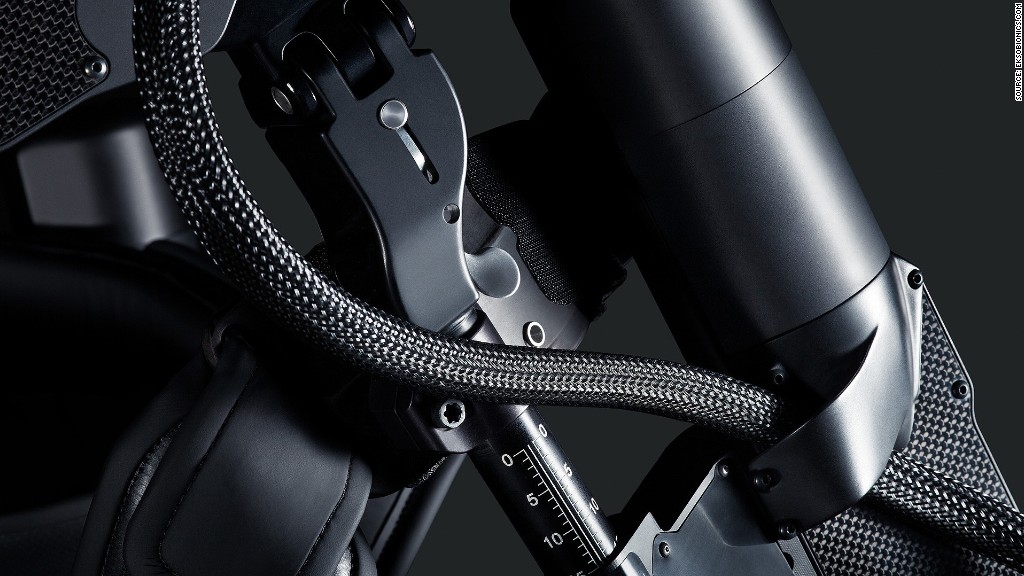
Perhaps one day Ekso will be used to make ordinary people into superhumans. Today, Ekso is marketed for people with traumatic injuries, including victims of strokes, spinal cord injuries or disease and brain injuries. The suit works by powering steps when the wearer shifts his or her weight. Motors push the legs forward .
Health: Google (GOOGL), Microsoft (MSFT) and some other companies are developing smart contact lenses that measure the glucose levels in diabetics' tears. If successful, the contacts could help to eliminate one of the most painful and intrusive daily routines of diabetics.

The prototype contacts are outfitted with tiny wireless chips and glucose sensors, sandwiched between two lenses. They are able to measure blood sugar levels once per second. Google is working on putting LED lights inside its lenses that would flash when those levels are too low or high.
Wear all these devices, and you can become a real-life bionic woman. Or a $6 million man -- only for much less.

